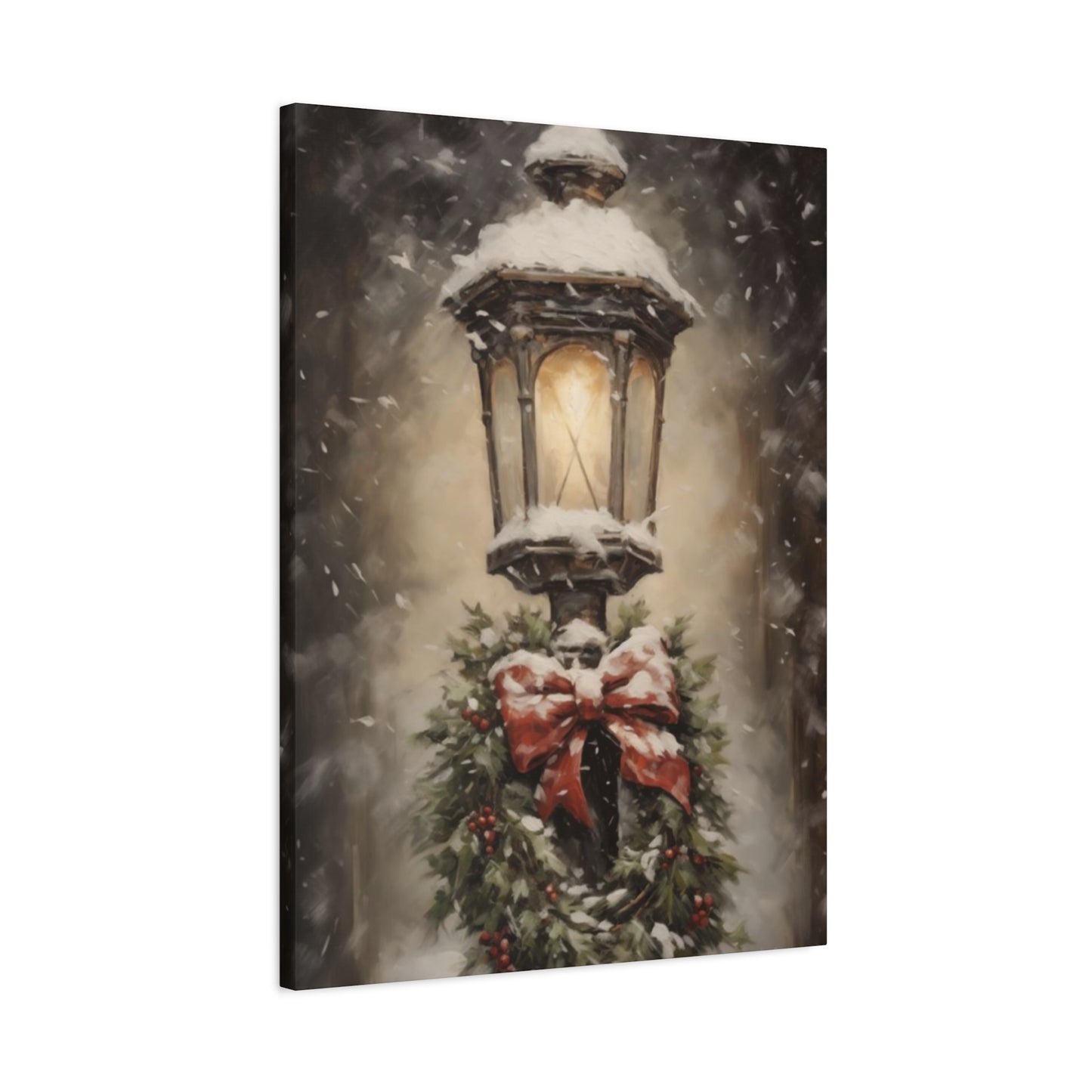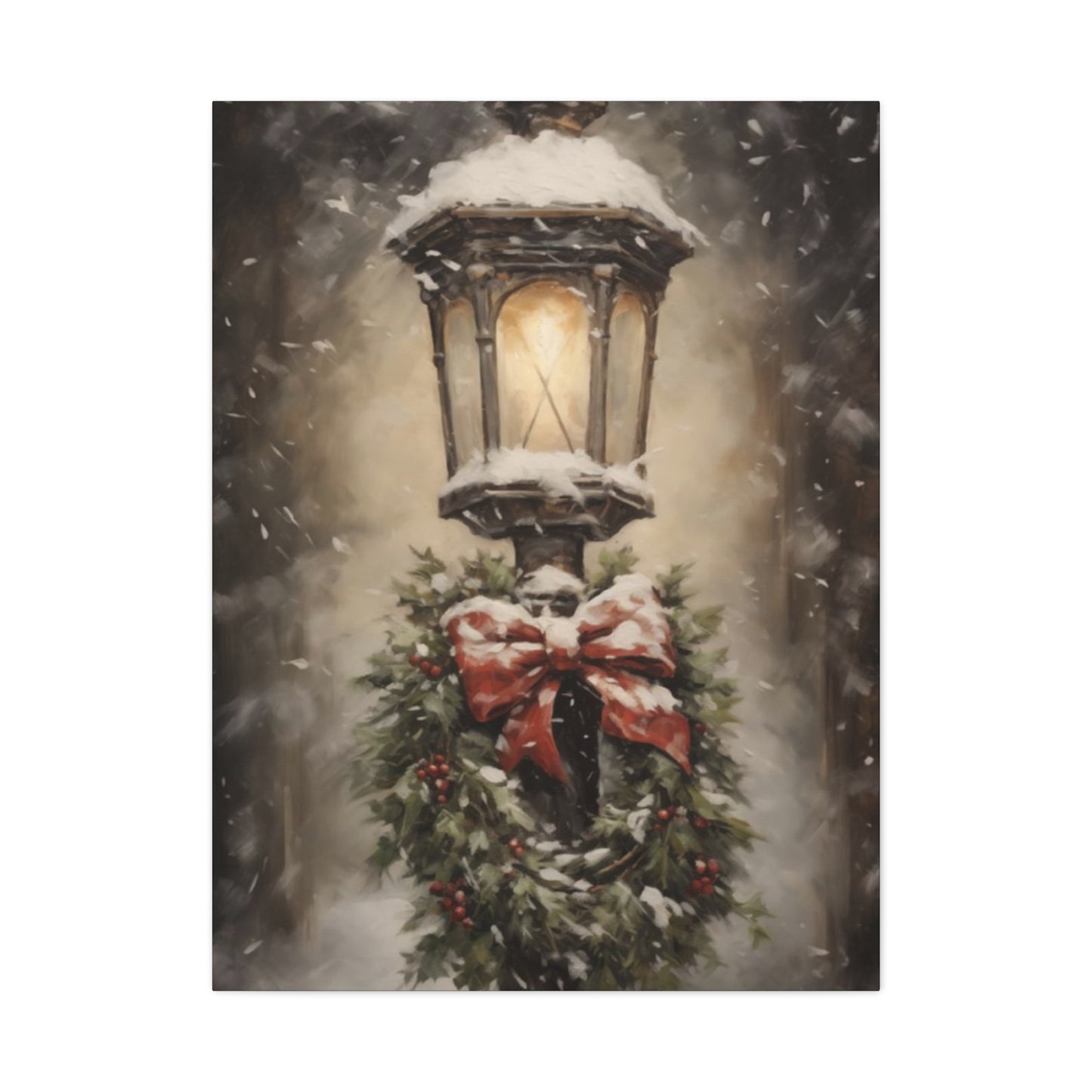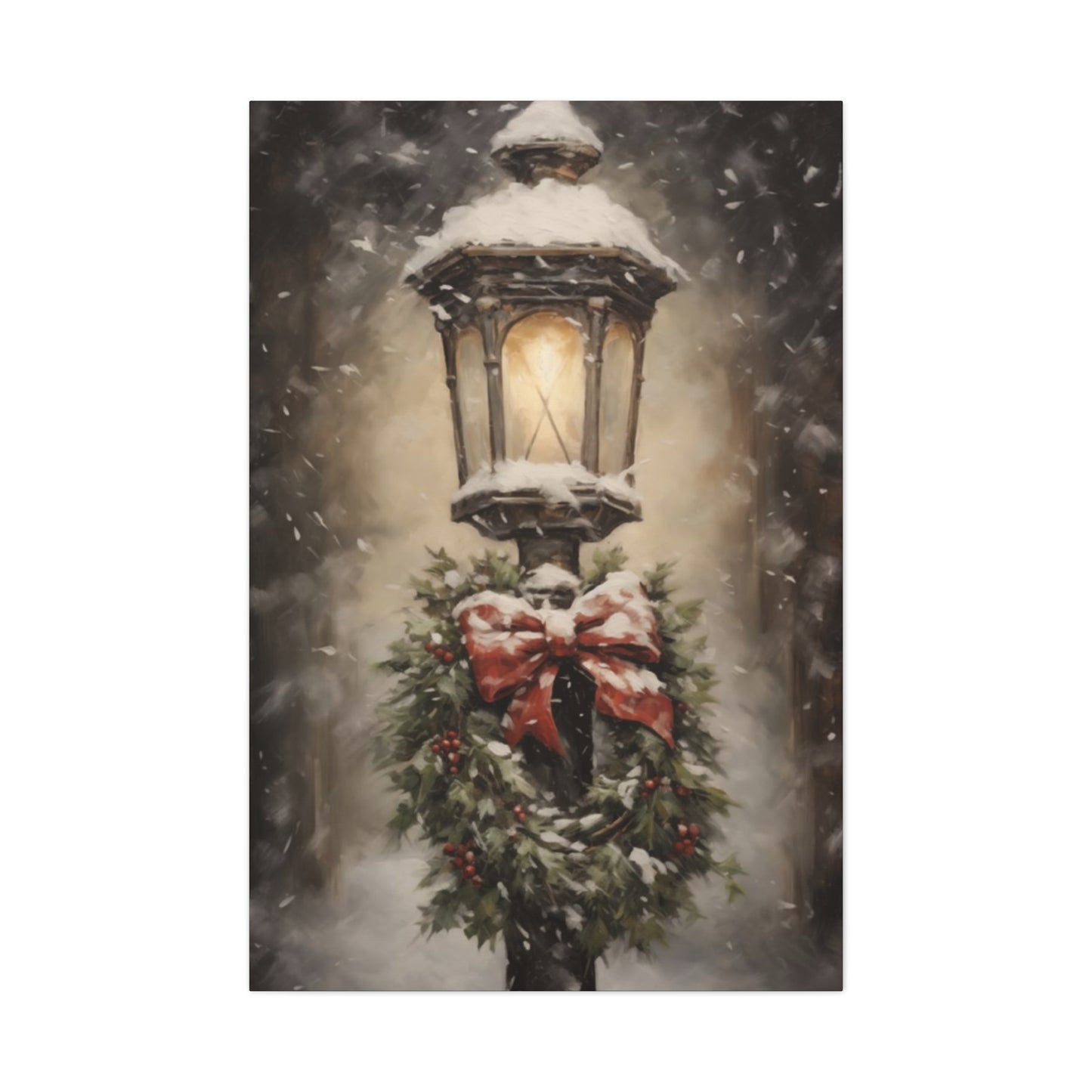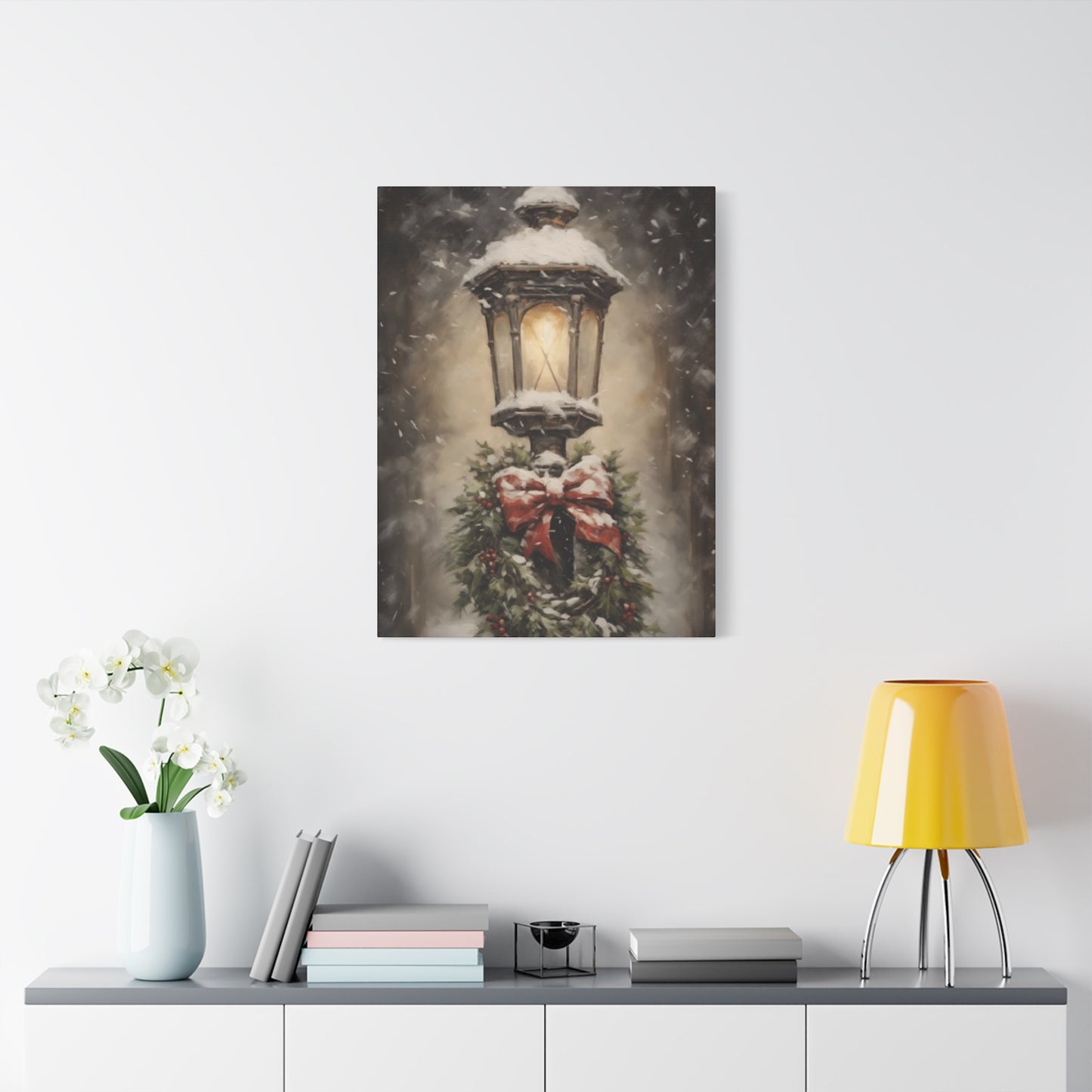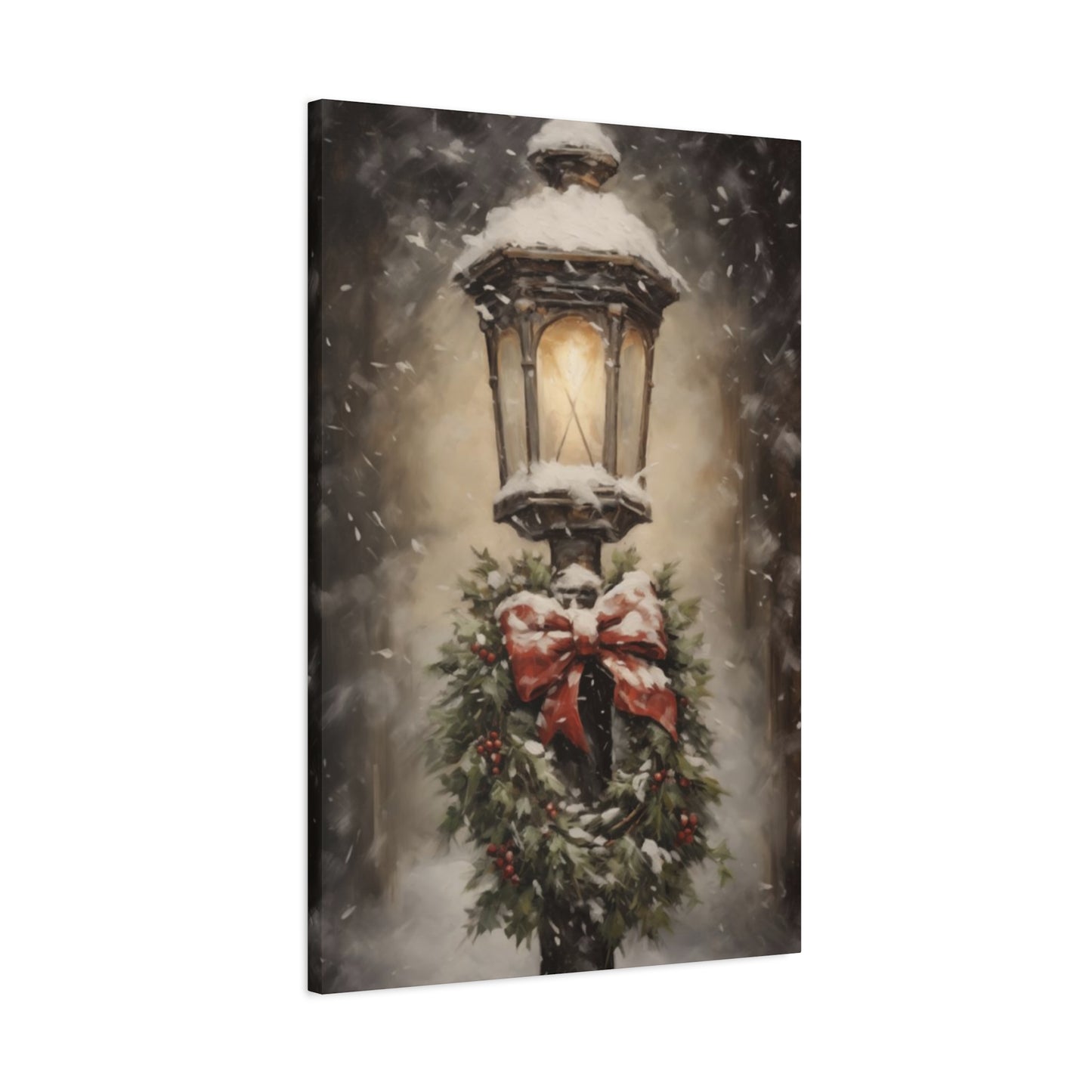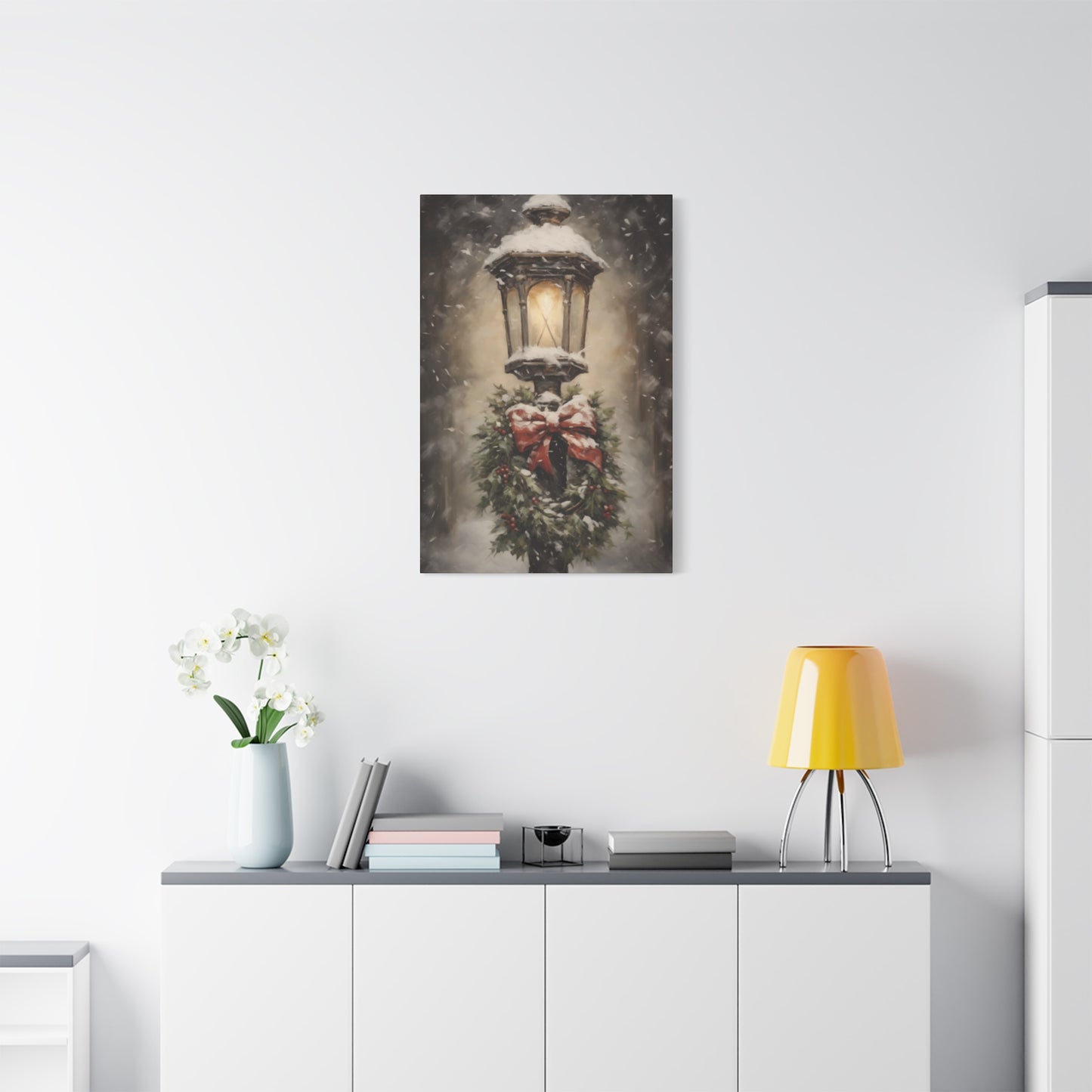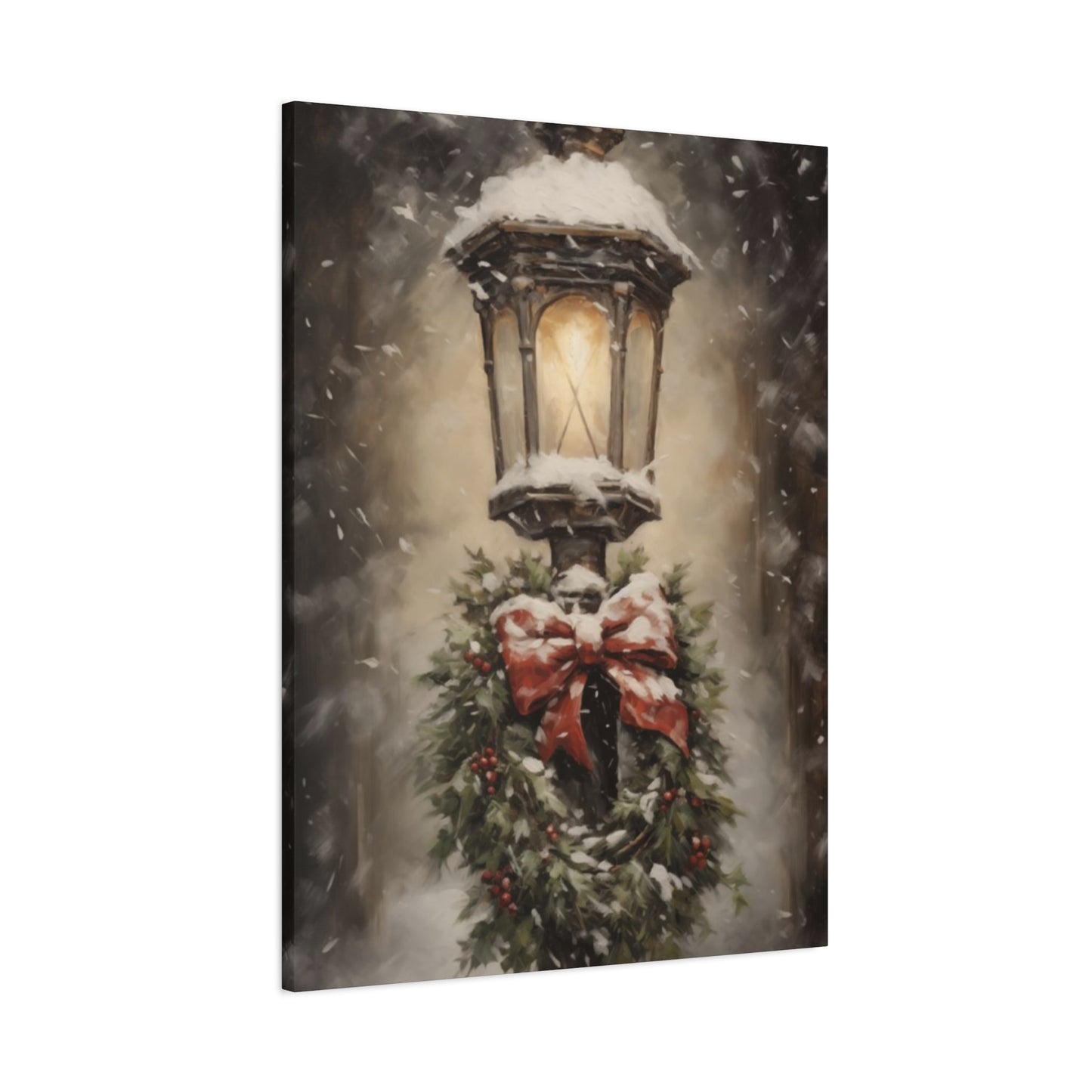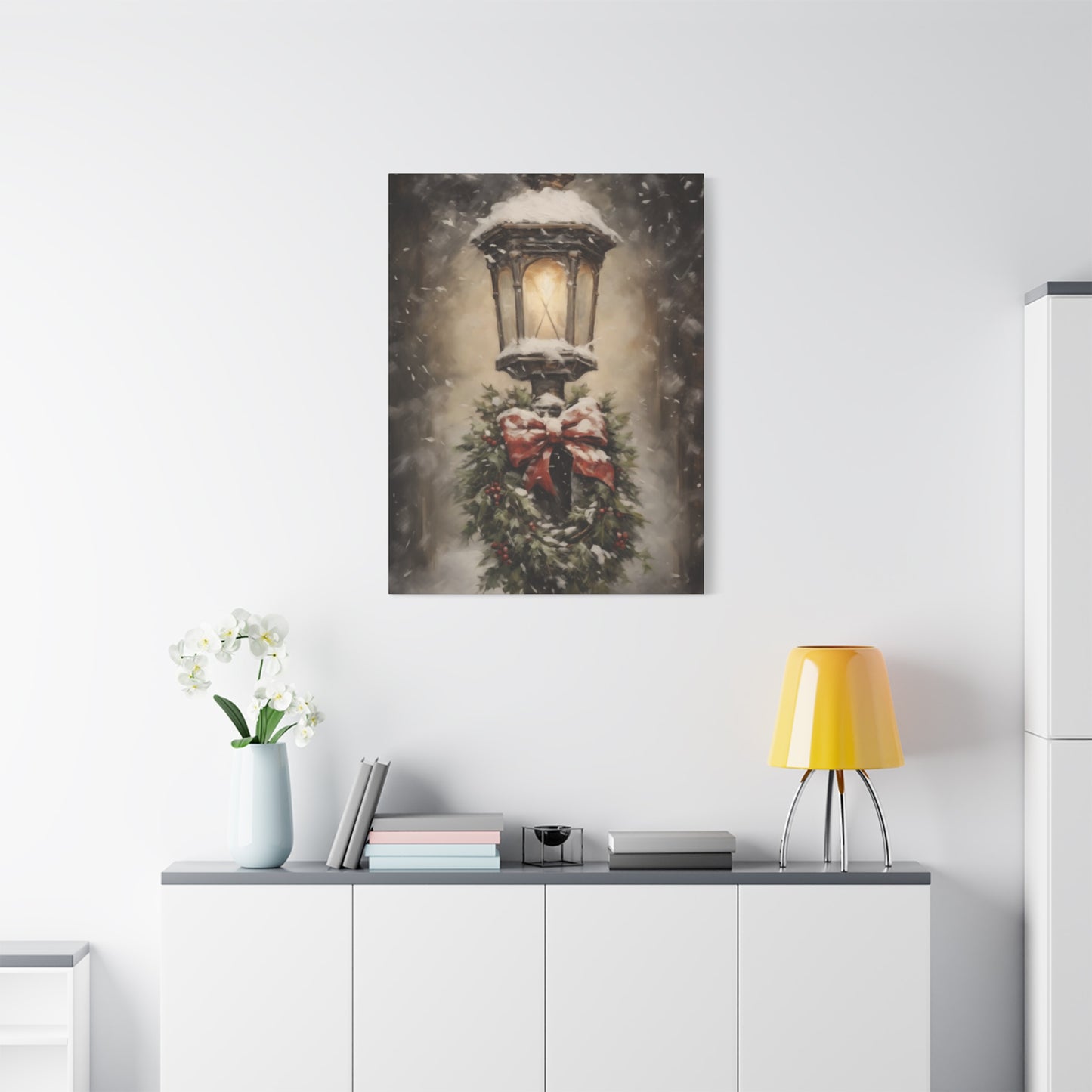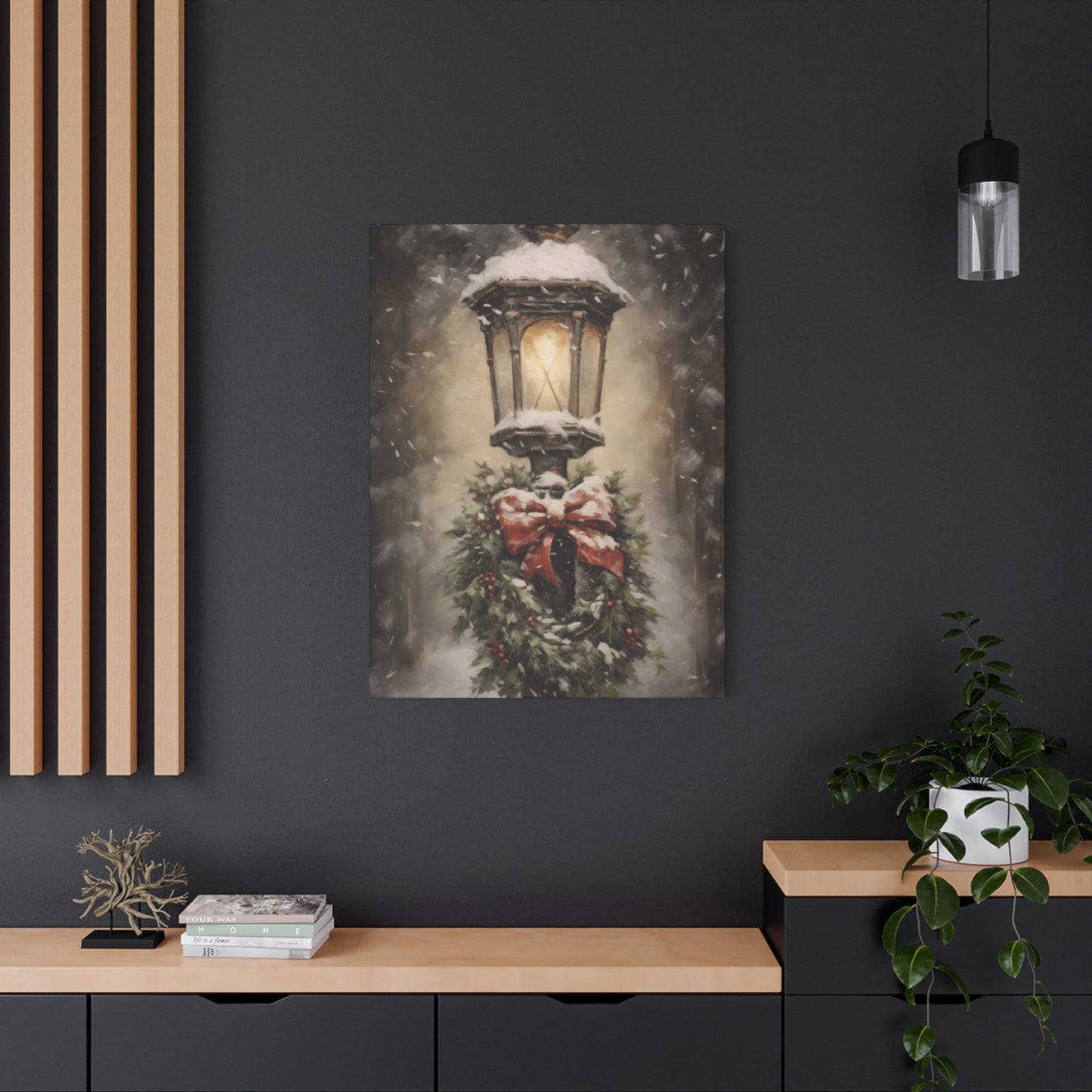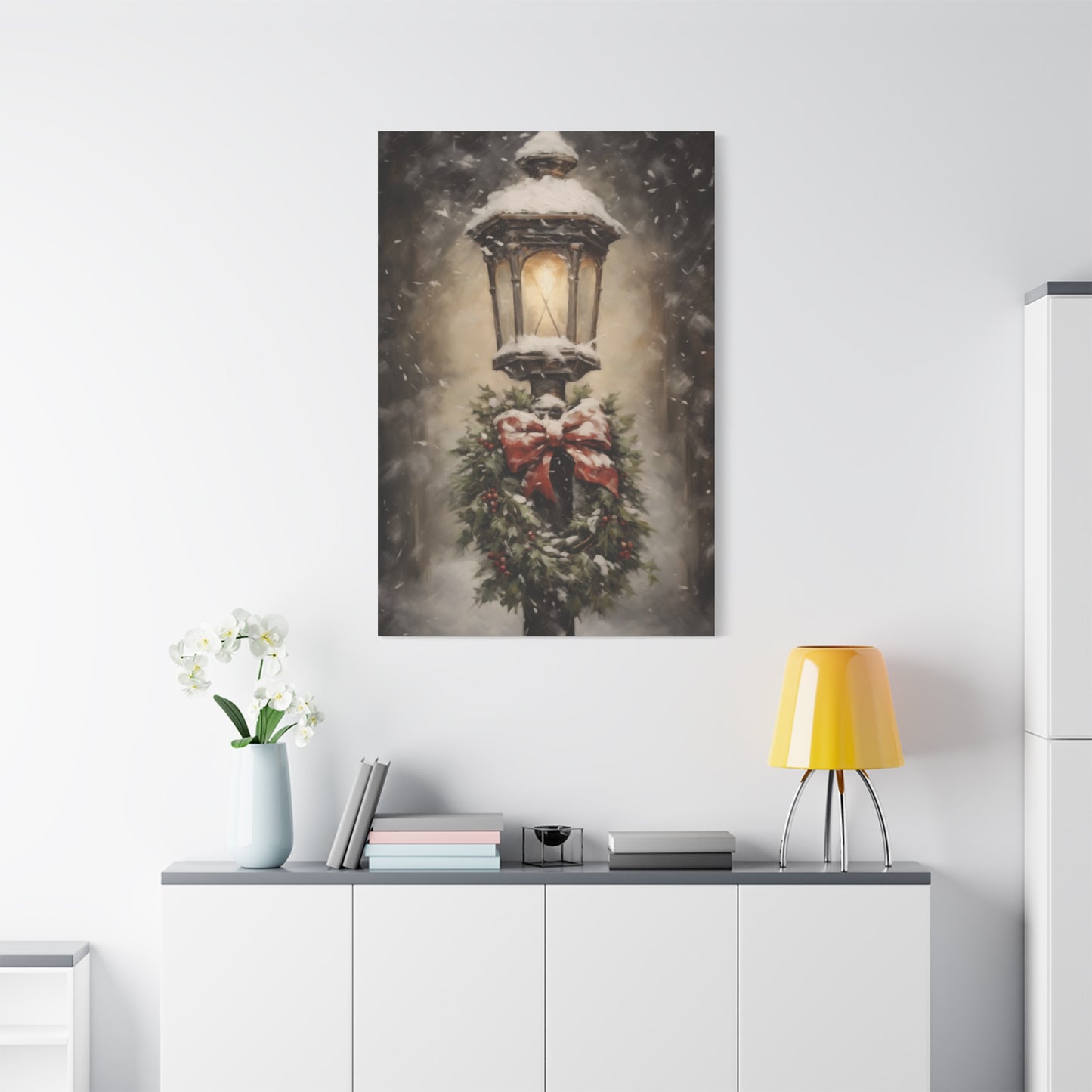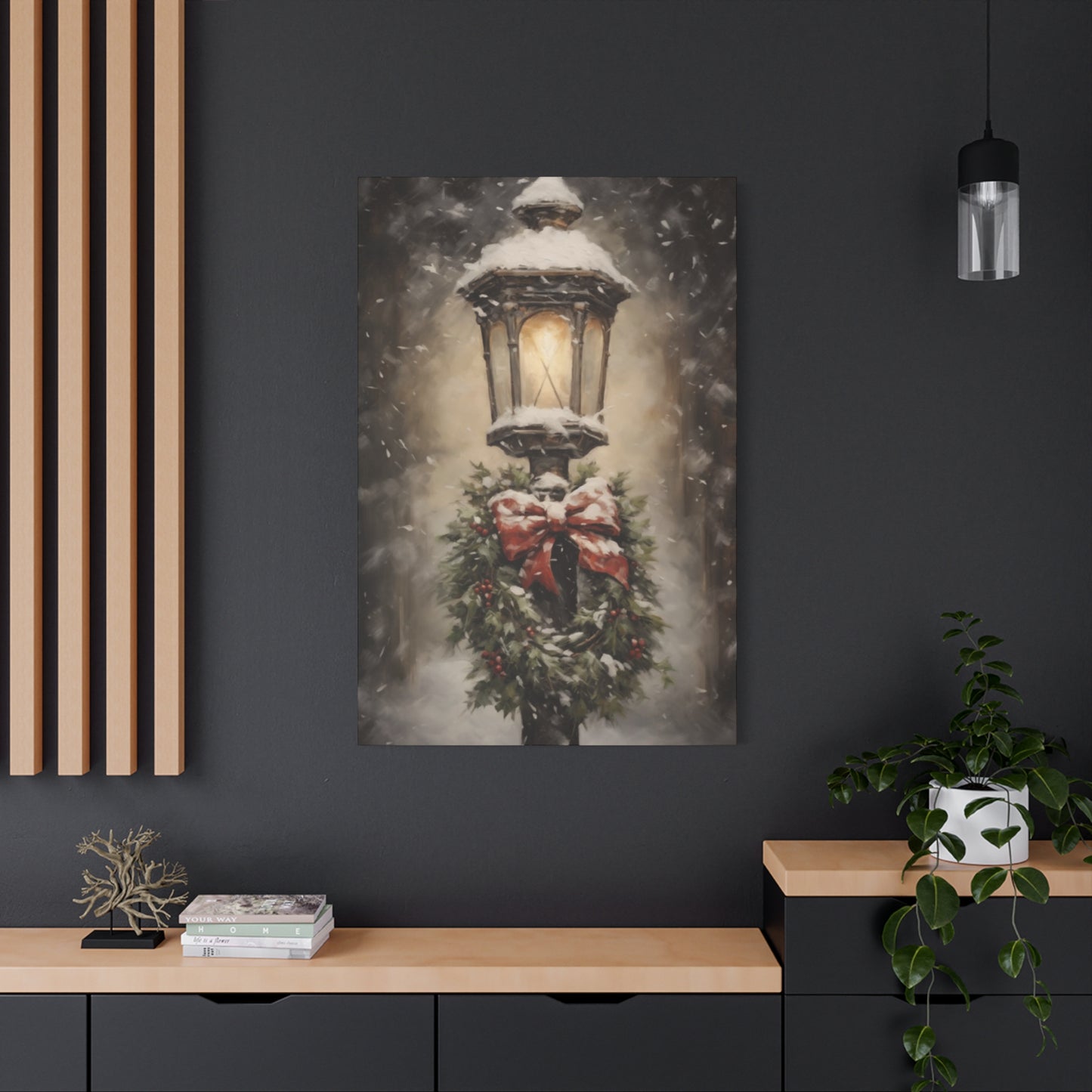Winter Light Pole Wall Art: Illuminating Your Home with Seasonal Charm
Winter brings a unique magical quality to our surroundings, and few artistic subjects capture this enchantment quite like illuminated poles standing gracefully against snowy backdrops. These towering beacons of light have become increasingly popular in home decoration, offering homeowners a sophisticated way to bring the serene beauty of winter landscapes indoors. The gentle glow emanating from these fixtures creates an atmosphere of warmth and comfort that perfectly complements the cold, crisp season outside.
The appeal of winter light pole artwork extends far beyond simple decoration. These pieces serve as focal points that can transform any room into a cozy winter retreat, regardless of the actual weather outside your windows. Whether you prefer realistic depictions of snow-covered streets illuminated by vintage lampposts or abstract interpretations that capture the essence of winter's gentle luminosity, this art form offers endless possibilities for enhancing your living environment.
From rustic cabin aesthetics to modern metropolitan themes, winter light pole artwork adapts beautifully to various design philosophies. The versatility of these pieces makes them ideal for homeowners seeking to create seasonal ambiance without committing to permanent changes in their decor. As we explore the many facets of this captivating art form, you'll discover how these illuminated sentinels can bring both visual interest and emotional warmth to your home throughout the winter months.
Capturing Winter's Glow: Light Pole Wall Art
The art of capturing winter's ethereal glow through light pole artwork requires both technical skill and artistic vision. Artists who specialize in this genre understand that the interplay between artificial illumination and natural winter elements creates a compelling visual narrative. The soft amber or white light emanating from these fixtures contrasts beautifully with the cool blues and grays of winter landscapes, creating a temperature balance that viewers find inherently appealing.
Professional artists employ various techniques to achieve this luminous effect in their work. Some use layered painting methods that build up the glow gradually, starting with darker base tones and adding increasingly lighter colors to simulate the way light disperses through winter air. Others prefer digital mediums that allow for precise control over luminosity and color temperature. The most successful pieces often incorporate subtle details like the way snow catches and reflects light, creating small sparkles and highlights that add depth and realism to the composition.
The emotional impact of these glowing winter scenes cannot be understated. Viewers often report feeling a sense of comfort and nostalgia when observing well-executed light pole artwork. This psychological response stems from the universal human association between light and safety, warmth and shelter. During the darker months of winter, these artistic representations provide a visual reminder of hope and resilience, qualities that many people find particularly meaningful during challenging seasons.
When selecting pieces that effectively capture winter's glow, consider the quality of the light rendering and how it interacts with the surrounding environment. The best examples will show subtle gradations in the light's intensity, with the brightest areas near the source gradually fading to deeper shadows in the distance. The artist should demonstrate an understanding of how different weather conditions affect light transmission, whether it's the crisp clarity of a cold night or the diffused softness created by falling snow.
Color temperature plays a crucial role in the authenticity of winter light pole artwork. Traditional incandescent bulbs emit warm yellow tones, while modern LED fixtures often produce cooler white light. Artists must consider these differences when creating their work, as the wrong color temperature can make an otherwise skillful piece feel artificial or unconvincing. The most effective pieces often incorporate multiple light sources with varying color temperatures, creating a more complex and realistic lighting environment.
The positioning and angle of light poles within the composition greatly affects the overall impact of the piece. Vertical elements like lamp posts provide strong compositional anchors that guide the viewer's eye through the artwork. When combined with horizontal elements like snow-covered streets or sidewalks, they create pleasing geometric relationships that add structure and balance to the composition. Artists often use the rule of thirds or other compositional guidelines to position these elements for maximum visual appeal.
The Magic of Light Poles in Winter Scenes
Winter transforms ordinary light poles into magical beacons that seem to possess an almost fairy-tale quality. This transformation occurs through the unique combination of atmospheric conditions, lighting effects, and the stark beauty of winter landscapes. When snow begins to fall, these utilitarian objects become something far more romantic and evocative, serving as silent sentinels that mark safe passages through winter's embrace.
The magic begins with the way winter weather interacts with artificial lighting. Snowflakes catch and scatter light as they fall, creating a dynamic display that changes constantly throughout the evening. This natural light show provides artists with rich source material for creating pieces that feel alive and dynamic rather than static and lifeless. The swirling patterns of illuminated snow around light poles create movement and energy that draws viewers into the scene.
Fog and mist, common winter weather phenomena, add another layer of enchantment to light pole scenes. These atmospheric conditions soften hard edges and create mysterious, dreamlike environments where light seems to float freely through the air. Artists who successfully capture these effects often use techniques like dry brushing or airbrush methods to achieve the soft, diffused quality that makes these scenes so captivating.
The seasonal cycle adds temporal magic to light pole artwork. The same street lamp that might go unnoticed during summer months becomes a crucial focal point when surrounded by snow and ice. This seasonal transformation speaks to the cyclical nature of life and the way familiar environments can feel completely new when viewed through the lens of changing seasons. Many collectors specifically seek out artwork that captures this transformative quality.
Historical and cultural associations also contribute to the magical quality of winter light pole scenes. These fixtures often evoke memories of classic literature, holiday traditions, and childhood experiences. The image of a snow-covered street lamp brings to mind scenes from beloved stories like those found in classic winter tales or holiday movies. This cultural resonance adds emotional depth to the artwork that goes beyond mere aesthetic appreciation.
The interplay between natural and artificial elements creates compelling visual contrasts that enhance the magical quality of these scenes. The geometric precision of manufactured light fixtures stands in stark contrast to the organic, irregular patterns created by snow accumulation and ice formation. This tension between order and chaos, between human-made and natural elements, creates visual interest that keeps viewers engaged with the artwork over time.
Artists often enhance the magical quality of their winter light pole scenes by including subtle details that reward close examination. These might include small animals seeking shelter, footprints in the snow that tell stories of passersby, or the way icicles form unique patterns on the fixture itself. These details create layers of meaning that allow viewers to discover new aspects of the artwork with repeated viewing.
How Light Pole Art Adds Warmth to Winter Decor
Despite depicting cold winter scenes, light pole artwork paradoxically adds warmth to home decor through its psychological and visual effects. The presence of illuminated fixtures in these pieces signals comfort and habitability, countering the potential coldness that winter imagery might otherwise convey. This warming effect occurs on multiple levels, from the literal representation of light sources to the emotional associations these images evoke.
The color palette typically employed in winter light pole artwork contributes significantly to its warming properties. While winter scenes naturally incorporate cool blues, grays, and whites, the presence of warm light sources introduces contrasting yellows, oranges, and soft whites that create visual warmth. These warm tones tend to advance visually, drawing the eye and creating focal points that feel inviting and comfortable. The careful balance between cool and warm colors creates a harmonious composition that feels both authentic and welcoming.
Texture plays an important role in how these artworks add warmth to a room. Many pieces incorporate visible brushstrokes or other textural elements that create visual interest and tactile appeal. Even smooth photographic prints can benefit from carefully chosen frames and matting materials that add textural warmth. The combination of visual and tactile warmth helps create a more complete sensory experience that enhances the overall ambiance of the room.
The scale and placement of winter light pole artwork within a room significantly affects its warming properties. Larger pieces tend to have more impact and can serve as statement elements that anchor entire room designs. Smaller pieces work well in groupings or as accent elements that support larger design themes. The key is ensuring that the scale feels appropriate for the room size and that the placement allows the artwork to interact harmoniously with other design elements.
Lighting considerations become particularly important when displaying winter light pole artwork. The way natural and artificial room lighting interacts with the piece can either enhance or diminish its warming effects. Artwork featuring glowing light poles often benefits from subtle accent lighting that doesn't compete with the internal light sources depicted in the piece. Warm-toned LED spotlights or picture lights can enhance the cozy feeling without overwhelming the artwork's own luminous qualities.
The warming effect of this artwork extends beyond visual elements to encompass emotional and psychological benefits. During the darker months of winter, when natural light is limited, these pieces provide visual reminders of illumination and comfort. The presence of light sources within the artwork can help combat the seasonal depression that many people experience during winter months, providing a form of light therapy through artistic representation.
Seasonal rotation strategies can maximize the warming benefits of winter light pole artwork. During the coldest months, these pieces can take prominent positions in main living areas where they'll have maximum impact on daily life. As seasons change, they might be rotated to smaller rooms or storage areas, making way for artwork that better reflects the current season while maintaining their availability for future winters.
Winter Nightscapes Featuring Light Poles
Winter nightscapes featuring light poles represent some of the most dramatic and emotionally evocative artwork in this genre. The contrast between the deep darkness of winter nights and the warm glow of artificial lighting creates compelling visual narratives that speak to fundamental human needs for safety, warmth, and community. These pieces often capture not just the visual beauty of illuminated winter scenes, but also the emotional resonance of finding light in darkness.
The technical challenges of creating effective winter nightscape artwork are considerable. Artists must master the representation of multiple light sources, each with its own sphere of influence and interaction with environmental elements. Snow and ice reflect and scatter light in complex ways, creating subtle variations in illumination that require careful observation and skillful execution. The most successful pieces demonstrate an understanding of how light behaves in cold air, which is typically clearer and more transparent than warm air, allowing for sharper definition of light patterns.
Atmospheric perspective becomes particularly important in winter nightscape compositions. The way distant light sources appear softer and cooler compared to nearer ones helps establish depth and spatial relationships within the artwork. Artists often use graduated color shifts and decreasing contrast to create the illusion of atmospheric depth, with foreground elements appearing warmer and more detailed while background elements fade into cooler, less defined forms.
The emotional impact of winter nightscapes varies significantly based on compositional choices and contextual elements. A solitary light pole in an empty snow-covered street might evoke feelings of solitude or peaceful contemplation, while multiple light sources suggesting a populated area might convey warmth and community. The presence or absence of signs of human activity – footprints, lit windows, moving figures – dramatically affects the mood and emotional resonance of the piece.
Weather conditions provide rich opportunities for visual variety in winter nightscape artwork. Clear, starry nights allow for sharp contrasts and well-defined shadows, while stormy conditions create drama and movement. Falling snow adds dynamism and softness, while fog creates mystery and romance. Each weather condition requires different artistic techniques and offers unique aesthetic possibilities that keep this genre fresh and engaging.
The time of night depicted in the artwork significantly affects its character and appeal. Early evening scenes might include the last traces of daylight mixing with artificial illumination, creating complex color relationships and transitional lighting effects. Deep night scenes focus more purely on artificial light sources and their interactions with winter elements. Dawn scenes can incorporate the first hints of natural light returning, suggesting hope and renewal.
Urban versus rural settings offer dramatically different aesthetic possibilities for winter nightscape artwork. Urban scenes might feature multiple light sources creating complex patterns of illumination and shadow, while rural scenes might focus on a single lamp post or street light as a beacon of civilization in the wilderness. Each setting appeals to different aesthetic preferences and emotional associations, allowing collectors to choose pieces that resonate with their personal experiences and preferences.
Using Light Pole Art to Evoke Cozy Winters
The ability of light pole artwork to evoke feelings of coziness during winter months stems from its capacity to visually represent the concept of shelter and warmth in cold environments. These pieces work on both conscious and subconscious levels to create associations with comfort, safety, and the pleasures of being warm inside while acknowledging the beauty of winter outside. The key to achieving this cozy effect lies in the careful selection and presentation of artwork that emphasizes the protective and welcoming aspects of artificial illumination.
Color psychology plays a crucial role in creating cozy winter atmospheres through light pole artwork. Warm color temperatures in the light sources, typically ranging from soft yellows to warm whites, create immediate associations with comfort and habitability. When these warm tones are contrasted with the cooler blues and purples of winter shadows, they create a sense of refuge and sanctuary that viewers find inherently appealing. The brain interprets these warm light sources as safe havens, triggering emotional responses associated with home and comfort.
The scale and intimacy of the scenes depicted greatly influence their cozy appeal. Artwork showing light poles in residential neighborhoods or small town settings tends to feel more intimate and cozy than those depicting major urban thoroughfares or commercial districts. The presence of houses with lit windows, smoke rising from chimneys, or other signs of domestic life enhances the cozy factor by suggesting warm homes and happy families gathered inside.
Textural elements in both the artwork itself and its presentation can enhance the cozy feeling significantly. Paintings with visible brushstrokes or other tactile qualities create a more intimate, handmade feeling that contributes to overall coziness. The choice of frames and matting materials also affects the cozy quotient, with natural wood frames and warm-toned mats generally contributing more to a cozy atmosphere than sleek metal frames or stark white matting.
The seasonal context in which light pole artwork is displayed affects its cozy impact. During actual winter months, these pieces serve as reflections of the current environment, reinforcing the seasonal experience while adding the warming effect of indoor comfort. During other seasons, they can provide nostalgic reminders of winter's cozy pleasures or offer cooling visual relief during hot summer months.
Grouping and arrangement strategies can amplify the cozy effects of light pole artwork. Creating gallery walls that combine winter light pole pieces with other complementary winter imagery – perhaps including scenes of fireplaces, snow-covered cabins, or winter wildlife – creates more immersive environments that strengthen the overall cozy atmosphere. The key is maintaining cohesion in color palette, style, and mood while providing enough variety to maintain visual interest.
Lighting design for rooms containing cozy winter light pole artwork should support and enhance the mood created by the pieces themselves. Warm-toned ambient lighting, perhaps supplemented by table lamps or candles, creates real-world lighting conditions that mirror those depicted in the artwork. Dimmer controls allow for adjustment throughout the day, enabling residents to create optimal cozy conditions during darker winter evenings.
Black and White Winter Light Pole Art
Black and white winter light pole artwork offers a sophisticated alternative to color pieces, emphasizing composition, contrast, and emotional content over literal color representation. This monochromatic approach often results in more dramatic and timeless pieces that can adapt to various decorating schemes while maintaining their artistic impact. The absence of color forces both artists and viewers to focus on fundamental design elements like line, shape, texture, and value relationships.
The technical demands of creating effective black and white winter light pole art are considerable. Without color to help define forms and create interest, artists must rely entirely on value contrasts and textural variations to create compelling compositions. The challenge of representing multiple light sources in monochrome requires sophisticated understanding of how light behaves and how to translate color temperature differences into grayscale equivalents. The most successful pieces often feature dramatic contrasts between deep blacks and bright whites, with carefully modulated gray tones providing transitional elements.
Historical precedents in black and white photography and printmaking provide rich inspiration for artists working in this medium. The tradition of street photography, particularly work done during winter conditions, offers numerous examples of how artificial lighting can be effectively rendered in monochrome. Classic film photography's grain structure and contrast characteristics often serve as aesthetic references for contemporary artists creating black and white winter scenes.
The emotional impact of black and white winter light pole art often differs significantly from color versions of similar scenes. Monochrome treatments tend to feel more dramatic and sometimes melancholic, emphasizing the stark beauty of winter rather than its potential warmth and coziness. This emotional difference makes black and white pieces particularly effective in certain design contexts where a more serious or contemplative mood is desired.
Compositional considerations become even more critical in black and white winter light pole artwork. The absence of color means that compositional elements like leading lines, symmetry, and the relationship between positive and negative areas carry greater weight in creating successful pieces. Light poles naturally provide strong vertical elements that can anchor compositions, while snow-covered ground planes and building silhouettes provide horizontal counterpoints that create balanced, harmonious arrangements.
The versatility of black and white winter light pole art in various decorating contexts makes it particularly valuable for collectors and homeowners. These pieces can work equally well in traditional and contemporary settings, and they coordinate easily with existing color schemes without clashing or competing for attention. This adaptability makes them excellent choices for investment purchases or for homeowners who frequently change their decorating schemes.
Print quality and presentation become particularly important with black and white winter light pole artwork. The full range of values from pure black to bright white must be accurately reproduced to maintain the dramatic impact of the original work. High-quality printing processes and archival papers ensure that the subtle gradations and sharp contrasts that make these pieces effective are preserved over time. Framing choices often favor simple, elegant presentations that don't compete with the artwork's inherent drama.
DIY Winter Light Pole Wall Art Ideas
Creating your own winter light pole artwork offers numerous advantages, including customization options, cost savings, and the personal satisfaction of handmade decoration. Whether working from photographs, imagination, or direct observation, amateur artists can produce meaningful pieces that perfectly match their personal aesthetic preferences and home decorating needs. The key to successful DIY winter light pole art lies in understanding fundamental artistic principles while embracing the creative freedom that comes with personal expression.
Photography serves as an excellent starting point for DIY winter light pole artwork. During winter months, opportunities abound for capturing compelling images of illuminated poles in various weather conditions and settings. Early morning and evening hours provide the most dramatic lighting conditions, while different weather situations offer unique aesthetic possibilities. Digital photography allows for extensive experimentation with composition and lighting without the expense of film processing.
Painting techniques suitable for amateur artists include watercolor, acrylic, and oil methods, each offering different advantages and challenges. Watercolor excels at creating soft, atmospheric effects but requires careful planning and execution. Acrylic paints provide versatility and ease of correction, making them ideal for beginners. Oil paints offer the greatest range of effects and blending possibilities but require longer drying times and more careful handling. Mixed media approaches can combine the best aspects of multiple techniques.
Digital art creation has become increasingly accessible for amateur artists, with software ranging from simple phone apps to professional-grade programs. Digital techniques allow for easy experimentation, unlimited revisions, and professional-quality output when properly executed. Tablet-based drawing applications provide natural, intuitive interfaces that make digital art creation more approachable for traditional artists transitioning to digital mediums.
Reference gathering and preparation are crucial steps in creating successful DIY winter light pole artwork. Building a collection of reference photographs, studying existing artwork, and understanding basic principles of light and shadow will improve the quality of finished pieces significantly. Sketching and planning compositions before beginning final artwork helps avoid costly mistakes and ensures better results.
Scale and format considerations affect both the artistic process and the final display of DIY winter light pole artwork. Smaller pieces are generally easier for beginners to manage and complete successfully, while larger pieces can make more dramatic statements in home decorating contexts. The choice between horizontal, vertical, and square formats should consider both the natural proportions of light pole subjects and the intended display location.
Finishing and presentation options for DIY winter light pole artwork include various framing, matting, and mounting approaches. Simple, clean presentations often work best for amateur artwork, avoiding elaborate framing that might overwhelm less sophisticated compositions. Professional printing services can help amateur artists achieve high-quality reproductions of their work, allowing for multiple copies or larger sizes than might be practical to create by hand.
Cost management strategies for DIY winter light pole artwork projects include careful planning of materials and techniques. Starting with less expensive materials and gradually upgrading as skills develop helps control costs while allowing for artistic growth. Buying supplies in appropriate quantities for planned projects avoids waste while ensuring adequate materials for completion.
Light Poles and Snow: A Perfect Winter Combo
The combination of light poles and snow creates one of winter's most visually appealing and emotionally resonant imagery. This pairing works on multiple aesthetic levels, from the contrast between geometric human-made forms and organic natural patterns to the interplay between artificial illumination and natural winter elements. The relationship between these elements provides artists and decorators with rich source material for creating compelling visual narratives that capture the essence of winter's beauty.
Snow accumulation patterns on and around light poles create fascinating visual effects that artists have long sought to capture. The way snow builds up on horizontal surfaces while being blown free from vertical ones creates interesting geometric relationships. Ice formation adds another layer of complexity, with its crystal-clear surfaces reflecting and refracting light in unpredictable ways. These natural phenomena provide endless variation in how similar scenes can appear under different weather conditions.
The physics of light transmission through falling snow creates unique atmospheric effects that enhance the visual appeal of light pole scenes. Snowflakes act as tiny mirrors and prisms, scattering light in all directions and creating halos of illumination around light sources. This scattering effect varies with the size and density of snowflakes, providing subtle but important variations in how scenes appear. Heavy, wet snow creates different effects than light, dry powder, giving artists multiple options for depicting similar subjects.
Color relationships between snow and artificial lighting provide rich possibilities for artistic expression. Fresh snow's pure white surface reflects whatever color light falls upon it, creating subtle variations in tone and hue that can be extremely beautiful when skillfully rendered. The blue shadows cast by snow in areas not directly illuminated create pleasing color complements to the warm tones typically produced by artificial lighting.
Seasonal progression affects how snow and light pole combinations appear throughout winter months. Early winter scenes might show light accumulations on still-visible ground surfaces, while deep winter imagery might feature complete snow coverage with only the tops of light poles visible. Spring thaw conditions create different aesthetic opportunities, with melting snow creating reflective water surfaces and revealing previously hidden ground features.
The practical aspects of light poles functioning in snowy conditions add narrative elements to artwork depicting these combinations. Snow accumulation that blocks or diffuses light sources tells stories about weather intensity and duration. Ice formation on electrical components suggests prolonged cold conditions. These details add authenticity and interest to artistic representations while providing viewers with subtle environmental information.
Cultural and historical associations between snow and artificial lighting enhance the emotional resonance of artwork combining these elements. Images of snow-covered street lamps evoke classic winter scenes from literature, film, and personal memory. These associations tap into shared cultural experiences that make the artwork more meaningful and emotionally engaging for viewers.
The maintenance and care of actual light poles in snowy conditions provides interesting subject matter for realistic artwork. The contrast between maintained and unmaintained fixtures tells stories about human presence and activity. Snow removal equipment, maintenance workers, and signs of regular upkeep add narrative elements that can enhance the storytelling aspects of winter light pole artwork.
Where to Find Stunning Winter Light Pole Art
Discovering exceptional winter light pole artwork requires knowledge of various sources and markets where quality pieces can be found. The art market offers numerous avenues for acquiring these pieces, from traditional galleries and art fairs to online marketplaces and direct artist relationships. Understanding the characteristics of different markets helps collectors make informed decisions about where to invest their time and money in building their collections.
Online art marketplaces have revolutionized access to winter light pole artwork, providing global reach and extensive selection options. These platforms allow buyers to compare prices, view multiple artists' interpretations of similar subjects, and read reviews from other collectors. The convenience of online shopping enables thorough research and comparison that might not be practical when limited to local sources. However, the inability to see pieces in person before purchase requires careful attention to return policies and seller reputations.
Local art galleries often provide the most reliable sources for high-quality winter light pole artwork, offering the advantage of seeing pieces in person before purchase. Gallery staff typically possess extensive knowledge about the artists they represent and can provide valuable insights about technique, inspiration, and artistic development. The personal service available through galleries often includes assistance with framing, installation, and maintenance of artwork purchases.
Art fairs and seasonal markets provide opportunities to discover emerging artists and unique pieces that might not be available through traditional retail channels. These events often feature more experimental or limited-edition works that appeal to collectors seeking distinctive pieces. The temporary nature of these markets can create urgency that leads to better pricing for buyers willing to make quick decisions.
Direct relationships with artists offer numerous advantages for collectors of winter light pole artwork. Working directly with artists eliminates middleman costs while providing opportunities for custom work and personal interaction with the creative process. Many artists are willing to create pieces in specific sizes, color schemes, or compositions when working directly with collectors. These relationships can also provide access to new work before it becomes available through other channels.
Auction houses occasionally feature winter light pole artwork, particularly vintage or collectible pieces. These venues can provide opportunities to acquire high-quality work at competitive prices, though the auction format requires quick decision-making and bidding expertise. Estate auctions sometimes yield unexpected treasures at below-market prices, making them worth monitoring for serious collectors.
Print-on-demand services have expanded access to winter light pole artwork reproductions, allowing collectors to acquire high-quality prints of work that might otherwise be financially out of reach. While these reproductions lack the uniqueness of original pieces, they provide affordable options for decorating multiple rooms or replacing pieces that might be damaged or lost.
Art rental services provide temporary access to high-quality winter light pole artwork, making it possible to enjoy expensive pieces without the commitment of purchase. These services work particularly well for seasonal displays or for people who prefer to change their artwork frequently. Some rental services offer purchase options that allow renters to buy pieces they particularly enjoy.
Framing Tips for Winter Light Pole Paintings
Proper framing significantly affects how winter light pole artwork is perceived and preserved, making frame selection and installation crucial decisions for collectors and homeowners. The frame serves multiple functions: protecting the artwork from environmental damage, enhancing its visual presentation, and integrating it successfully into the surrounding decor. Understanding these functions helps ensure that framing choices support rather than detract from the artwork's impact.
Frame material selection should complement both the artwork's style and the room's decorating scheme. Natural wood frames often work well with traditional or rustic winter light pole paintings, providing warmth and texture that enhance the cozy feelings these pieces typically evoke. Metal frames offer more contemporary aesthetics that can make winter scenes feel more modern and sophisticated. The finish quality and construction details of frames significantly affect both appearance and longevity.
Color coordination between frames and artwork requires careful consideration of both obvious and subtle color relationships. Frames that match colors present in the artwork create harmonious presentations, while contrasting frames can add drama and emphasis. Neutral frame colors often provide the safest choices, allowing the artwork to remain the focus while providing appropriate support and definition. The room's existing color palette should also influence frame color selections.
Matting choices greatly affect how winter light pole artwork is presented and perceived. Mat colors can either harmonize with or contrast against the artwork, with each approach offering different aesthetic results. White and off-white mats provide clean, classic presentations that work well in most contexts. Colored mats can draw attention to specific elements within the artwork or create stronger connections with room decorating schemes. Mat width proportions should balance with both frame size and artwork dimensions.
Glass selection involves trade-offs between clarity, reflection, and protection features. Regular glass provides good clarity at reasonable cost but can create distracting reflections under certain lighting conditions. Anti-reflective glass minimizes reflection issues but costs significantly more and may slightly reduce image clarity. UV-filtering glass provides important protection for valuable artwork but adds expense and may affect color reproduction slightly.
Size relationships between artwork, mats, and frames require careful planning to achieve visually pleasing proportions. Undersized frames can make artwork appear cramped or overwhelmed, while oversized frames might dominate the artwork inappropriately. Professional framing guidelines provide starting points for these decisions, but personal preferences and specific room conditions should also influence final choices.
Installation considerations include wall preparation, hanging hardware, and positioning relative to room lighting and furniture placement. Proper wall anchoring ensures safety and prevents damage to both artwork and walls. The height at which pieces are hung affects viewing angles and integration with furniture arrangements. Lighting placement should enhance rather than compete with the illumination effects depicted within the artwork itself.
Professional versus DIY framing decisions depend on artwork value, complexity of presentation requirements, and personal skill levels. High-value pieces generally justify professional framing to ensure proper protection and presentation. Simple presentations of less valuable pieces might be suitable for DIY approaches, provided proper materials and techniques are used. The long-term costs of professional framing often compare favorably with DIY approaches when quality and durability are considered.
Light Poles in Snowy Cityscape Wall Art
Urban winter scenes featuring light poles offer compelling subjects for artwork that captures the unique character of cities during winter months. These pieces typically emphasize the relationship between human infrastructure and natural weather phenomena, creating visual narratives about urban life during challenging seasonal conditions. The complexity of cityscape compositions provides rich opportunities for artistic expression while presenting technical challenges that require sophisticated artistic solutions.
Perspective and depth creation become particularly important in snowy cityscape artwork featuring light poles. Urban environments typically include multiple layers of visual information, from foreground details to distant backgrounds, requiring careful management of atmospheric perspective and scale relationships. Light poles serve as important compositional elements that help establish spatial relationships and guide viewers' eyes through complex urban scenes.
The interaction between natural and artificial lighting in urban winter scenes creates complex illumination patterns that challenge artists to render accurately. Street lighting, building illumination, vehicle headlights, and reflected light from snow surfaces combine to create intricate lighting environments that require sophisticated understanding of light behavior. The most successful pieces demonstrate mastery of these complex lighting relationships while maintaining overall compositional unity.
Architectural elements in snowy cityscapes provide context and scale for light pole subjects while adding visual interest and complexity to compositions. Buildings, bridges, streets, and other urban infrastructure create geometric relationships with light poles that can enhance or diminish their visual impact. Artists must balance the prominence of light poles with other urban elements to create harmonious compositions that serve their intended artistic purposes.
Human activity indicators in snowy cityscape artwork add narrative elements that enhance viewer engagement and emotional connection. Footprints, vehicle tracks, lit windows, and occasional figures suggest the ongoing life of the city despite winter conditions. These elements can make urban winter scenes feel alive and dynamic rather than empty and desolate, affecting the overall mood and appeal of the artwork.
Weather condition variations provide numerous aesthetic possibilities for snowy cityscape artwork featuring light poles. Active snowfall creates dynamic movement and atmospheric effects, while clear conditions after snowfall emphasize the transformation of familiar urban environments. Fog, sleet, and freezing rain each create different visual effects that artists can use to create unique interpretations of similar subjects.
Scale considerations for snowy cityscape artwork affect both artistic execution and final presentation requirements. Large-scale pieces can capture the grandeur and complexity of urban winter scenes but require more wall area and viewing distance for optimal effect. Smaller pieces might focus on more intimate urban details but can lose the impressive scope that makes cityscape artwork particularly appealing.
Color palette management in snowy cityscape artwork must balance the natural color limitations of winter scenes with the need for visual interest and variety. The dominance of whites, grays, and blues in snowy conditions requires careful introduction of accent colors through artificial lighting, architectural details, and atmospheric effects. The most successful pieces often use limited but carefully chosen color palettes that feel both realistic and visually engaging.
The Symbolism of Light Poles in Winter Art
Light poles carry rich symbolic meaning in winter artwork that extends far beyond their literal function as sources of illumination. These vertical elements serve as powerful metaphors for guidance, hope, civilization, and human resilience in the face of natural challenges. Understanding these symbolic dimensions adds depth to both the creation and appreciation of winter light pole artwork, enabling viewers to connect with pieces on emotional and intellectual levels beyond mere aesthetic appreciation.
The concept of light overcoming darkness provides one of the most fundamental symbolic frameworks for interpreting winter light pole artwork. During the darkest months of the year, when natural daylight is at its minimum, artificial light sources take on heightened significance as symbols of hope and perseverance. This symbolism resonates particularly strongly in cultures where winter represents challenging times that must be endured until spring's renewal arrives.
Vertical orientation of light poles creates natural metaphors for reaching upward, aspiring to higher states, and connecting earth with sky. This upward thrust contrasts with the horizontal emphasis of most winter landscapes, creating visual tension that many viewers find psychologically meaningful. The pole's base, firmly planted in the ground, suggests stability and permanence, while its height suggests aspiration and transcendence.
The boundary between civilization and wilderness finds expression through light pole symbolism in winter artwork. These fixtures represent human presence and organization in landscapes that might otherwise appear wild and untamed. The circle of illumination created by each pole suggests a sphere of human influence and safety within the broader context of natural forces beyond human control.
Temporal symbolism emerges from the cyclical nature of artificial lighting and seasonal changes. Light poles that turn on at dusk and off at dawn represent daily cycles of activity and rest, while their increased importance during winter months suggests seasonal cycles of challenge and relief. This temporal dimension adds layers of meaning that can enhance viewer engagement with winter light pole artwork.
Navigation and guidance metaphors naturally arise from the practical function of light poles in providing illumination for safe passage. In winter conditions, when familiar landmarks may be obscured by snow and reduced visibility creates navigation challenges, these fixtures become crucial waypoints that enable safe travel. This practical function translates into symbolic meaning about guidance through difficult times and finding one's way during periods of uncertainty.
Community and connection symbols emerge from the fact that light poles typically serve multiple users and represent shared infrastructure. Unlike private lighting that serves only individual properties, street lighting represents communal investment in safety and accessibility. This shared aspect creates symbolic associations with social cooperation, mutual support, and collective responsibility for community welfare.
Memory and nostalgia themes often incorporate light pole imagery as anchors for recollections of past experiences. Many people have strong memories associated with specific light poles or types of lighting from their childhood neighborhoods, school routes, or other significant locations. Artists can tap into these nostalgic associations to create emotionally resonant work that speaks to shared human experiences of place and time.
Large Winter Light Pole Murals for Homes
Large-scale winter light pole murals offer dramatic decorating possibilities that can transform entire rooms into immersive winter environments. These oversized artworks serve as focal points that anchor decorating schemes while providing commanding visual presence that smaller pieces cannot achieve. The decision to incorporate large winter light pole murals requires careful planning regarding placement, lighting, and integration with existing room elements.
Scale considerations for large winter light pole murals must account for both the physical dimensions of available wall areas and the optimal viewing distances for different room uses. Rooms with high ceilings and significant wall areas can accommodate murals that would overwhelm smaller environments. The relationship between mural size and room proportions affects how comfortably inhabitants can interact with the artwork on a daily basis.
Installation requirements for large winter light pole murals vary significantly depending on the specific medium and mounting system used. Painted murals require extensive wall preparation and professional application but become permanent parts of the architectural environment. Removable murals using contemporary adhesive systems offer more flexibility but may have limitations regarding surface textures and long-term adhesion reliability.
Lighting design becomes particularly critical when displaying large winter light pole murals, as inadequate or inappropriate illumination can undermine the artwork's impact and even create viewing problems. The lighting within the mural must be considered alongside the room's ambient and accent lighting to ensure harmonious integration. Dramatic murals often benefit from dedicated accent lighting that enhances their three-dimensional illusion and color intensity.
Conclusion
Winter light pole wall art brings a touch of timeless magic and seasonal charm into your home, transforming everyday spaces into cozy, nostalgic sanctuaries. These artworks evoke the quiet beauty of snowy streets, gently falling flakes, and glowing lanterns that pierce the winter dusk—creating a peaceful ambiance that both soothes and inspires. More than just seasonal décor, winter light pole art is a celebration of warmth, light, and hope during the year’s most reflective months.
What makes this type of wall art so appealing is its ability to capture the essence of winter without overwhelming the space. Whether rendered in vintage styles, softly lit photography, or impressionistic brushstrokes, winter light pole imagery adds depth, texture, and a sense of calm. The interplay between shadows and illumination in these scenes invites a cozy, contemplative mood, making them perfect for entryways, living rooms, dining spaces, or reading nooks.
From a design perspective, these pieces often feature rich, neutral tones—deep blues, muted whites, warm golds, and charcoal greys—that complement a variety of interior styles, from rustic farmhouse to urban modern. A framed print of a snow-covered lamp post or a canvas depicting a glowing street corner bathed in winter light can become the centerpiece of a seasonal gallery wall or a subtle accent to your year-round décor.
Beyond aesthetics, winter light pole art also symbolizes resilience and guidance—the comforting glow in the darkness, the steady light in the storm. It’s a beautiful metaphor for hope, reflection, and the quiet joys of winter. Displaying such art in your home can uplift the spirit, spark nostalgia, and remind us of the beauty in life’s slower, quieter moments.
In conclusion, winter light pole wall art is more than a decorative seasonal piece—it’s a heartfelt tribute to the serenity and warmth that winter can bring. It illuminates your home with charm, meaning, and timeless elegance, turning your space into a cozy retreat from the cold world outside.

















